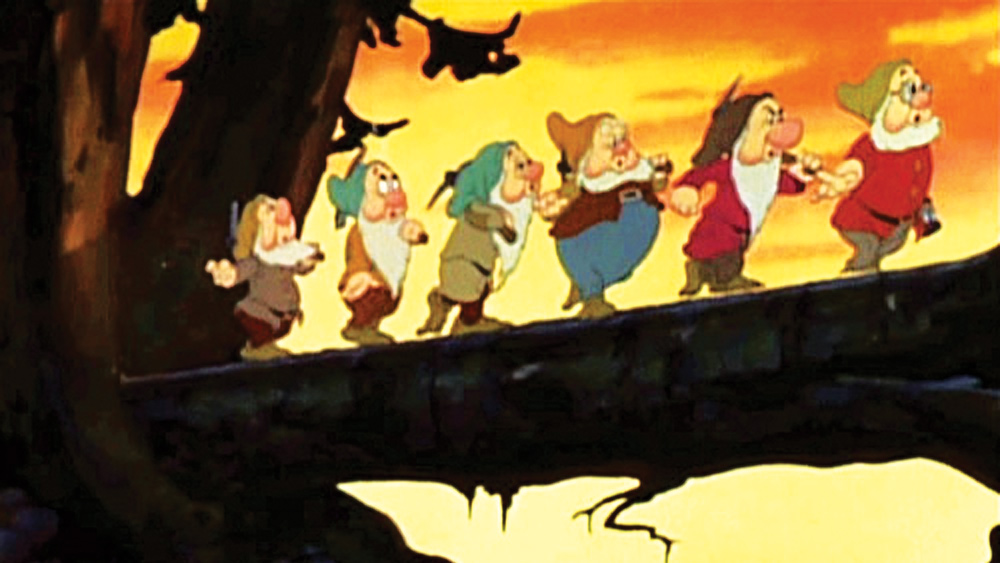Barry Germansky
Staff Writer
I know I’m not going to get any fans for this, but I think modern Disney-Pixar animated fiwlms are providing second-rate entertainment and devaluing the art of animation, robbing animated films of the imagination and morality displayed in old-time Disney classics.
This is troubling especially because so many children have been raised on Disney-Pixar in the last few years. Remember the Disney experience was not aimed exclusively at children in the 1930s and ’40s, and Sergei Eisenstein and Jean-Luc Godard considered Snow White and the Seven Dwarfs one of the greatest films ever made.

Whereas old Disney films both celebrated the animation medium’s possibilities (with things like poetically exaggerated character and camera movements) and played on real human-based and childhood fears (such as the personification of everyday objects into sinister creatures), today’s Disney-Pixar movies feature celebrity guest voices, glossy post-modern wisecracks and CG animation that is more literalized then expressive. This approach to animated filmmaking is short-changing animators and audiences out of the seemingly endless possibilities of animation.
Since Disney-Pixar movies are marketed at young children, we should consider what kind of encouragement animators are providing to inspire impressionable young minds. The sheer terror of watching the evil Queen in Snow White transform into a hideous old hag via a whirlwind of sights and sounds has been replaced by the annoying pastiche of Cars. The old Disney films played on real humanistic values, whereas their new counterparts play on human sarcasm.
If every facet of the human condition has been rendered little more than a chuckle by blind submission to postmodernism, this may explain the apparent apathy that contemporary filmmakers of all backgrounds seem to have when telling their stories. But if postmodernism is the way to go and old-style Romanticism is out, then why do the older films – represented in microcosm by the classic Disney films – register so strongly?
Although this shift in animated movies may seem like an inconsequential trend in film history, I think it carries some negative repercussions. There is a problem, I am convinced, with falling head-over-heels with hyper postmodernism in any medium of art, especially when it dominates all other forms of creative movements and styles. This is especially true when this ‘one and only brand of storytelling’ is being eaten up by children. Can we get a little variety for a change?
By subscribing to the postmodern smorgasbord of an artistic paradigm (postmodernism is more of a smorgasbord than most paradigms, as there has yet to be anything close to a definable consensus on the topic), filmmakers have decided to abandon all forms of structure in their art. The only good that can come from the broad definition of postmodernism is the freedom for one to choose their own structure in their chosen art. But abandoning all forms of structure in nearly all mediums of art (particularly in film) is not a good option.
Ultimately, children are growing up watching postmodernized animated movies that offer no insight into the human condition or that ineffable magic quality of moving objects being projected onto a screen.
While the old Disney is timeless, the new is trash



I think this article is total bollocks. Wall-E, UP and Ratatoullie are wonderful films on their own terms – Cars a lot of people didn’t like, but that was 2006. I think you’re confusing Disney-Pixar with Dreamworks. I think if anything Pixar is one of the few companies that show human compassion.
I think you’re also getting a bit biased by the ‘bring these timeless classics to your home!’ ads at the start of your Disney VHS’s, which is an easy thing to do. I truly despise when we’re told messages like ‘one of the best films of all time’ that we then find ourselves spitting back out. Films haven’t been around very long (nothing has), so take these things off the high horse they’ve stolen, and maybe this won’t make you so antsy.